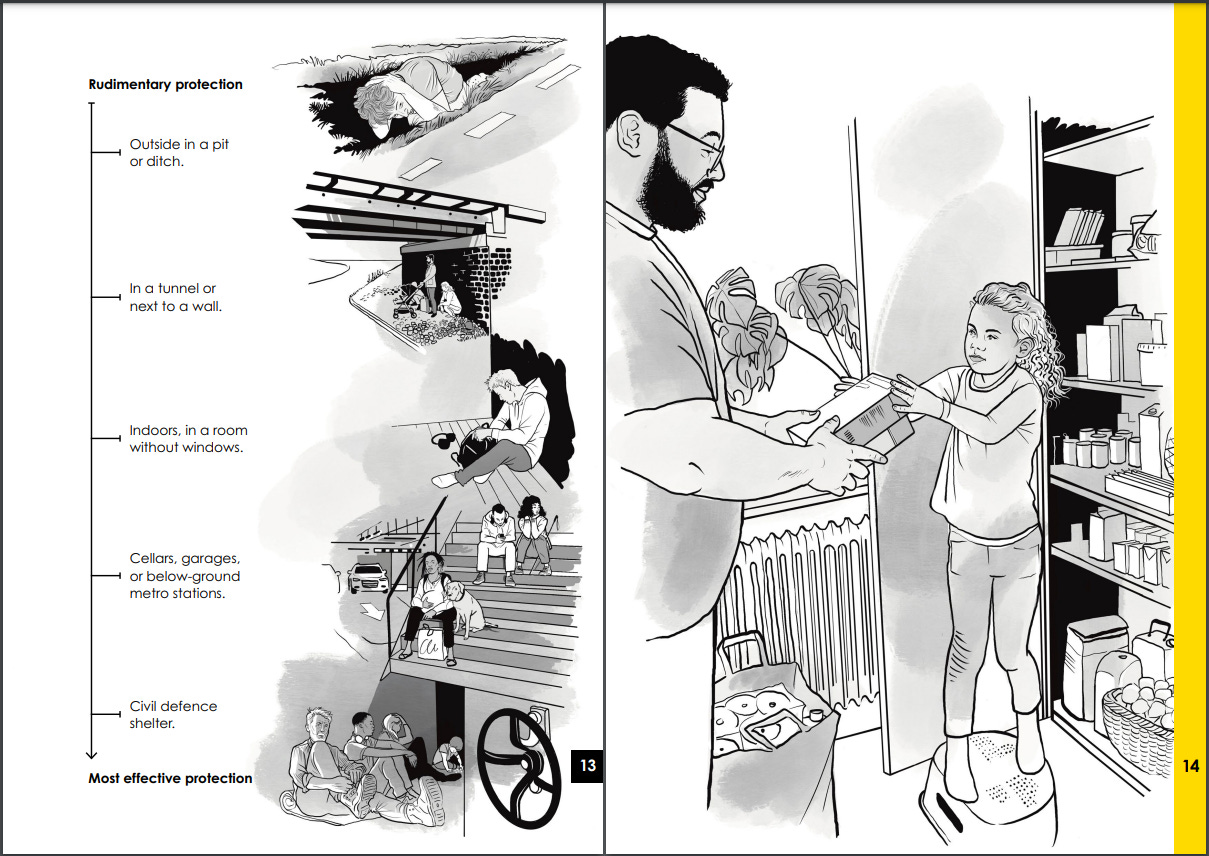A History of Preparedness in Sweden
Sweden’s historical approach to preparedness has been shaped by its strategic position in Europe and its policy of neutrality during the world wars and the Cold War. During World War I, although Sweden was neutral, it took steps to safeguard its vital resources and build military defenses in response to global instability. In World War II, Sweden maintained its neutrality but faced significant pressure from both the Axis and Allied powers, leading to an extensive civil defense program that included the construction of shelters, food rationing, and military mobilization.
The Cold War added new challenges, with Sweden remaining neutral while being positioned between the US-led West and the Soviet-led East. The country focused heavily on nuclear preparedness, building a vast network of shelters, and ensuring its military forces were ready for potential conflict. This period also saw Sweden pursue a policy of deterrence and non-alignment, while engaging in peacekeeping and diplomatic efforts.
In recent years, Sweden's historical stance on neutrality has shifted with the decision to apply for NATO membership in 2022, following the escalation of tensions in Europe, particularly the Russian invasion of Ukraine. This change, while strengthening Sweden’s security alliances, has also sparked debates about its impact on the country’s previous defense strategy. Sweden now faces challenges related to integrating into the NATO alliance, balancing its national defense policies with collective defense obligations, and reassessing its preparedness in the context of a new geopolitical reality. Sweden's commitment to self-reliance in crisis management continues, but the new membership brings complexities in how the country navigates its role in international security alongside its historical emphasis on independence and neutrality.
Today, Sweden’s preparedness legacy continues, with modern crisis management systems and a strong focus on civil defense and resilience, rooted in lessons learned during past conflicts. The country remains committed to ensuring its citizens are equipped to handle a variety of emergencies, from natural disasters to geopolitical tensions, all while adapting to its new position within NATO.
The following is a newly issued preparedness document from the Swedish government. This comprehensive guide is designed to help citizens understand the country's approach to crisis management, particularly in light of the evolving global security environment. It outlines practical steps for individuals and families to prepare for various types of emergencies, ranging from natural disasters to man-made crises such as military conflicts or terrorist attacks. The document emphasizes the importance of personal and community resilience, advising Swedish citizens on how to safeguard their homes, stay informed, and ensure access to essential supplies and services during a crisis. It also reflects Sweden’s updated defense strategy, aligning with the country’s recent decision to join NATO, and encourages citizens to be proactive in their preparedness efforts in this new geopolitical context.
Here is a direct link to the PDF: https://rib.msb.se/filer/pdf/30828.pdf




















